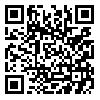Volume 18, Issue 119 (2021)
FSCT 2021, 18(119): 157-168 |
Back to browse issues page
Download citation:
BibTeX | RIS | EndNote | Medlars | ProCite | Reference Manager | RefWorks
Send citation to:



BibTeX | RIS | EndNote | Medlars | ProCite | Reference Manager | RefWorks
Send citation to:
Dalvi-Isfahan M. Modelling of drying and rehydration of pears using different mathematical models. FSCT 2021; 18 (119) :157-168
URL: http://fsct.modares.ac.ir/article-7-53767-en.html
URL: http://fsct.modares.ac.ir/article-7-53767-en.html
Assistant professor, Department of Food Science and Technology, Faculty of Agriculture, Jahrom University, Jahrom, Iran. , mohsen.dalvi@gmail.com
Abstract: (2467 Views)
By controlling dehydration and rehydration conditions, optimal reconstitution properties can be achieved. Therefore, mathematical models that describe the kinetics of moisture removal and moisture uptake are important in designing and optimizing that process. In this study, the drying process of pear slices at 5 different temperatures was investigated and the effective diffusion coefficient of the samples was determined. Drying data were also fitted with 9 mathematical models. The hydration process of the dried samples at 50°C was also fitted with 4 different models. The results showed that the effective diffusion coefficient has an increasing trend with increasing temperature and its temperature dependence can be described by Arrhenius equation. Among the dehydration models, two models (logarithmic and Weibull) were better than other models in predicting changes in sample moisture during drying and the best model for the rehydration process was Peleg model. In the last step, the temperature dependence of the constants of these equations were fitted with Arrhenius and exponential decay models.
Article Type: Original Research |
Subject:
Canning
Received: 2021/07/2 | Accepted: 2021/08/28 | Published: 2022/01/9
Received: 2021/07/2 | Accepted: 2021/08/28 | Published: 2022/01/9
Send email to the article author
| Rights and permissions | |
 |
This work is licensed under a Creative Commons Attribution-NonCommercial 4.0 International License. |








